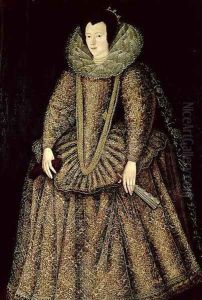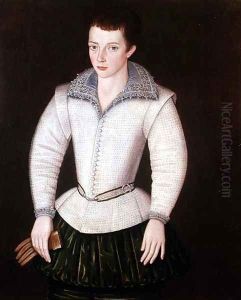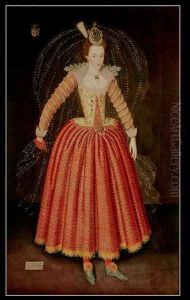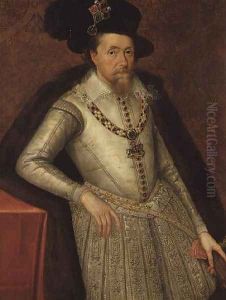John de, the Elder Critz Paintings
John de Critz the Elder, a distinguished figure in the realm of English art history, was born in 1551 in Antwerp, then part of the Spanish Netherlands. His life spanned an era of significant political and cultural transformation, culminating in his death in 1642 in London, England. De Critz's migration to England, part of the wave of Protestant Flemish artists fleeing the Spanish Inquisition, marked the beginning of his influential career within the English court.
De Critz is primarily celebrated for his role as a Serjeant Painter to the English monarchy, a prestigious position he shared with fellow artist Robert Peake the Elder during the late reign of Elizabeth I and throughout the reigns of James I and Charles I. This role entrusted him with the responsibility of decorating royal residences and producing portraits of the royal family, as well as heraldic and decorative painting tasks for ceremonial events. His tenure illustrates the close relationship between art and the projection of royal authority in early modern England.
Although de Critz's personal life remains somewhat obscured in historical records, his professional contributions are well documented. He was instrumental in establishing the visual iconography of the Stuart kings, contributing to the perpetuation of their legacy through portraiture. His work includes individual and group portraits of the royal family, courtiers, and foreign dignitaries, executed with a meticulous attention to detail and a keen eye for the dignified representation of his subjects. Despite the competition from other court painters, including the Flemish artist Anthony van Dyck, de Critz maintained a successful career due to his adeptness at navigating the intricacies of court patronage and his versatile painting style.
John de Critz the Elder's legacy is evident in the collection of his works that survive in various British institutions and collections. His portraits are valued not only for their artistic merit but also for their historical significance, offering insights into the identity and political symbolism of the early Stuart monarchy. De Critz's contribution to the development of English court painting and his role in the broader context of European artistic movements of the time underscore his importance in the annals of art history.






